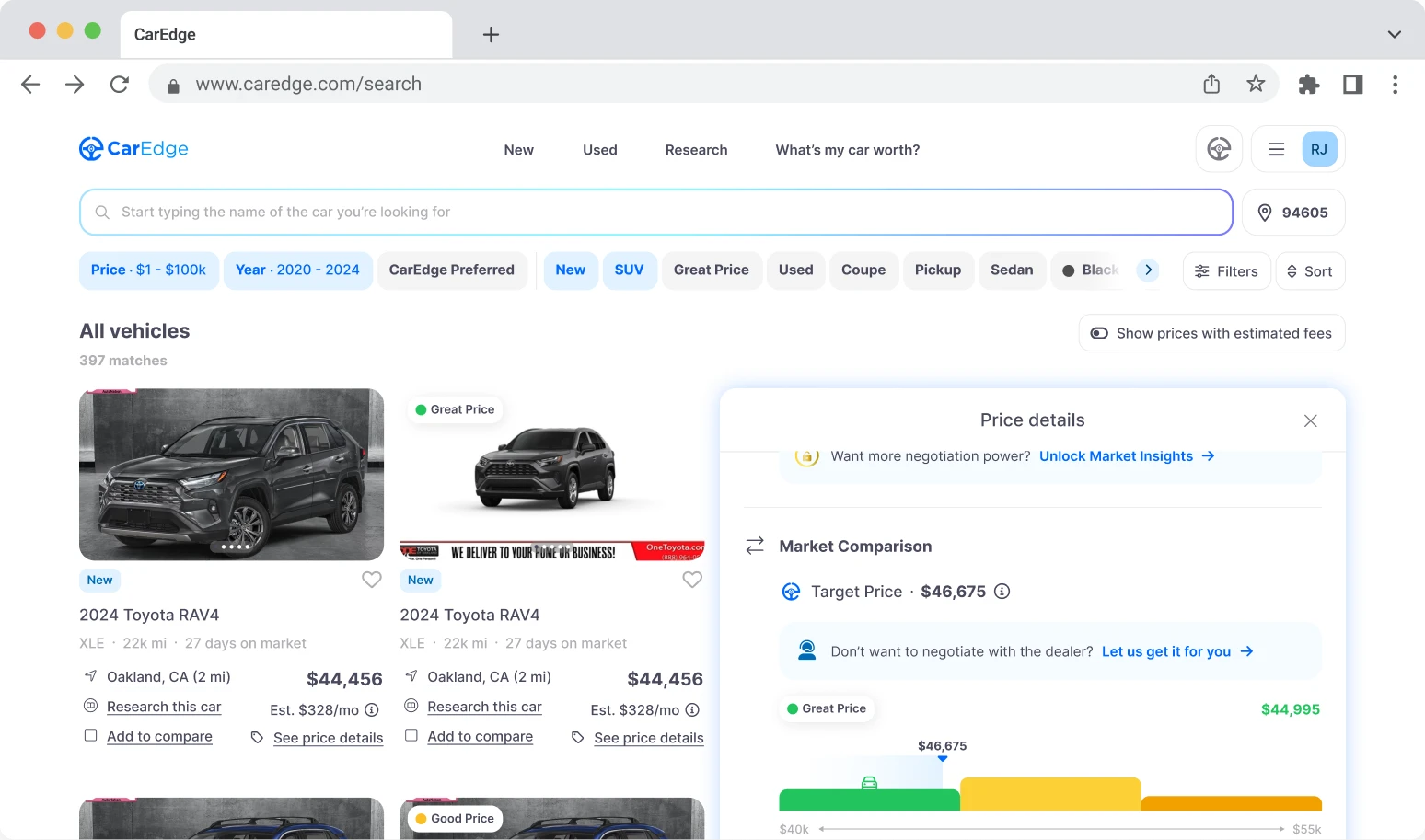Purchasing a vehicle often includes a critical, yet confusing step: signing the vehicle purchase agreement. This document outlines your purchase price, fees, financing details, trade-in terms, taxes, and more. Dealerships review these contracts daily, but most car buyers only encounter them once every few years. That’s why understanding every line item is essential.
In this guide, we’ll explain each section of the contract—from the Truth-in-Lending disclosures to your trade-in certification and warranty disclaimers—so you can sign with confidence and avoid surprises.
If You’re Financing: Truth-in-Lending Disclosure
The first thing you will see on your new car purchase contract will be information required by the federal Truth-in-Lending Act – or “TILA” for short. This information will not be present on your contract if you are not financing your purchase.
There are four key pieces of information that must be included in the Truth-in-Lending Disclosure:
- Annual Percentage Rate: the APR is the cost of credit expressed as a yearly rate in a percentage;
- Finance Charge: cost of credit expressed as a dollar amount (this is the total amount of interest and certain fees you will pay over the life of the loan if you make every payment when due);
- Amount Financed: the dollar amount of credit provided to you (this is normally the amount you are borrowing);
- Total of Payments: the sum of all the payments that you will have made at the end of the loan (this includes repayment of the principal amount of the loan plus all of the finance charges)
By law the dealership must review each of these four components of your purchase with you. Savvy finance managers will circle the boxes on the contract with the back of their pen so that it leaves a mark on the carbon copy of the contract as “proof” that they reviewed the document with the client.
Below this you will find details about your payment schedule. At this stage in the process, nothing should be foreign here; this should show the agreed-to loan financing option you selected.
Below that, you’ll notice a few disclaimers. One of importance is the prepayment notice. If you pay off your loan early you will not be subject to any penalty. Always keep this in mind when you are financing a vehicle purchase.
Itemized Purchase Components
Next comes a list of all components of the contract broken out in an itemized fashion. This section of the contract is intended to make it clear to you what you are purchasing and how much you are financing to make the purchase. For many people this section of the contract gets confusing, but it doesn’t have to be. Let’s break it down line by line.
Selling price
The first item you see in the itemized section of the contract is the cash price, also referred to as the selling price of the vehicle. This amount, plus the doc fee total the entire cash price or selling price of your purchase.
Down payment
The down payment section refers to any money you put down on the purchase. If you are trading in a vehicle this will include (like the example above does) a trade in allowance, payoff, and net trade in. If you owe more than your current car is worth, you will see a negative value on line 2C. If you were to put cash down for your purchase that would show on line D, and if you have any incentives or rebates that go towards your down payment those would show on line E.
Unpaid balance of cash price
This is simply the cash price minus the down payment amount.
Paid to others on your behalf
As it sounds, this section refers to any fees being paid to other parties on your behalf. In the example above you see “N/A” everywhere. That means the customer did not roll their taxes, title, and registration into the loan for their purchase. Instead, they paid those fees out of pocket when they went to register the car in their name. This section will typically be full of numbers that vary from state to state (since each state has different sales tax, title fees, and registration fees). If specific insurance coverages were purchased (which very few people purchase nowadays), and they were rolled into your loan, you would see those amounts in lines E, F, and G. The same goes for lines H through P.
Amount financed
The total amount financed is the sum of section 3 and section 4. The unpaid cash balance, plus the amount paid to others on your behalf.
Understanding Your Vehicle Purchase Agreement
Believe it or not, everything we’ve reviewed thus far is actually not the vehicle purchase agreement, it is the retail contract required for finance purchases. If you aren’t financing your vehicle purchase you won’t be reviewing a document like the one above. Instead you’ll see something similar to what we’re about to cover, the real purchase agreement.
The purchase agreement restates everything on the retail contract (just on slightly different parts of the page) and includes a few other important items, two worth calling out specifically:
- The buyer’s trade in certification; and
- The warranty disclaimer and documentation fee notice.
Buyer’s Trade-In Certification
This section of the vehicle purchase agreement only comes into play if you are trading a vehicle in during your purchase. When you sign the contract you certify that:
- The title is not salvaged;
- The airbags are intact and in working order;
- That the odometer has not been modified; and
- That the emissions system has not been modified.
If any of these conditions are not met, or you do not disclose them to the dealer, they can void the transaction. As with all situations, honesty is the best policy, so be sure to tell the truth before signing the dotted line!
Warranty Disclaimer and Doc Fee Notice
The final section to make you aware of on the vehicle purchase agreement is the warranty disclaimer and doc fee notice.
The warranty disclaimer makes it clear that the purchase is being made “as-is,” with no additional warranties (from the dealer). As the disclaimer states, any warranties from the manufacturer are not “party” to the dealer, and you can leverage them anywhere the manufacturer supports, not just the dealership where you are making your purchase.
Then, below that is the documentary fee notice. This states the reason why you see a “doc fee” on the purchase of your vehicle. Doc fees vary from state to state, and as we’ve written about before, you’ll never be able to get a dealer to remove a doc fee from their contract, but you can get them to discount a vehicle the amount of the fee.
Remember, always ask questions when you’re not sure about something. If there is something that you don’t understand, seek clarification. Never sign a document if you are not 100% sure what you are signing.
FAQs About Vehicle Purchase Agreements
Q: What is included in the Truth-in-Lending disclosure?
A: The disclosure must detail the Annual Percentage Rate (APR), total finance charge, amount financed, and total of payments. By law, dealers must review these figures with you before you sign.
Q: Are doc fees negotiable?
A: Doc fees vary by state and are often non-negotiable. But you can negotiate the vehicle price down by the amount of the doc fee to keep overall cost neutral.
Q: What does “as-is” mean in the warranty disclaimer?
A: “As-is” indicates the dealer is not providing any additional warranty. Only manufacturer warranties apply. For added protection, you can purchase aftermarket warranties, but they’re not required.
Q: What should I check in the trade-in certification?
A: Verify statements about your trade-in’s title status (non-salvage), emissions system, airbag functionality, and odometer accuracy. Incorrect certifications can void the sale.
100% Free Car Buying Help Is Here

Ready to outsmart the dealerships? Download your 100% free car buying cheat sheets today. From negotiating a deal to leasing a car the smart way, it’s all available for instant download. Get your cheat sheets today!
About CarEdge
CarEdge is a trusted resource for car buyers, offering data-backed insights, negotiation tools, and expert guidance to help consumers save time and money. Since 2019, CarEdge has helped hundreds of thousands of drivers navigate the car-buying process with confidence. Learn more at CarEdge.com.










![The 10 Best Year-End Car Deals [December 2025]](https://caredge.com/wp-content/uploads/2023/10/2024-infiniti-qx50-400x250.jpg)


Need to know if approved auto of Fulton ms is required to give you a vehicle of equal value if the vehicle you have from them motor blows up.
Okay I didn’t catch that they put an amount in the Cash Price of Vehicle ( line A ). The dealership sent us a check made out to DMV. Taxes were way less than the check and DMV doesn’t give cash back. The dealership will not write the check in my name! They want to give it back to the bank. I don’t trust these people to do that. My question is should that check be written out in my name? Thank you.